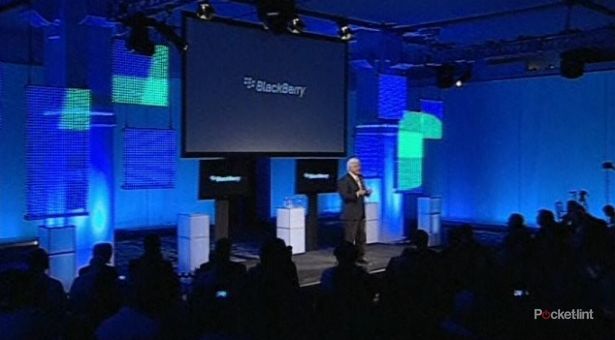On Tuesday morning in New York City, technology journalists and film crews lined the street of 42nd St. and 11th Avenue for an exclusive announcement from AT&T and Research In Motion (RIM). Most people in line were fairly certain they were waiting for the unveiling of the new BlackBerry 9800, and like most rumours, they proved to be true.
The new BlackBerry 9800, named “The Torch,” is RIM’s first slider smartphone featuring a 3.2-inch 360 x 480 capacitive touchscreen, QWERTY keyboard, and a new BlackBerry 6 operating system.
Ralph de la Vega, the president and CEO of AT&T Mobility declared it, “The best BlackBerry device ever!” According to de la Vega, the Torch puts the U.S. in a leadership position of intelligent mobile devices. He boasted that AT&T is America’s fastest global broadband network and the first carrier in the world to commercially deploy high-speed packet access (HSDPA) on a wide scale to 30 million worldwide users. He finished his speech by describing AT&T and RIM’s alliance as “one of the strongest relationships in the wireless industry”.
Mike Lazaridis, the president and CEO of RIM talked less about AT&T and more about the sleek new phone. After all “we are here to celebrate one of the most important products in RIM history”, he said. Lazaridis emphasized that launching the Torch with a new operating system and user interface is “fresh and exciting but also familiar”. He seemed keen on pushing innovation without alienating BlackBerry’s dedicated user base. Rest assured, “the famous back button”, as he described it, is still there.
Features that get Lazaridis excited: 1. Universal Search: simply touch the phone’s display screen, start typing and the phone searches your entire BlackBerry including bookmarks, music, videos, calendar events, text messages, bbms, social feeds and email inboxes. 2. Universal Inbox: RIM’s social feed including Facebook, Twitter, BBM and email.
Don Lindsay, VP of RIM User Experience confirms Lazaridis’ intentions stating, “Our top priority was to deliver a user experience for both existing and new BlackBerry customers”. The phone was designed according to four design criteria. 1) Keep it “fresh but familiar”. 2) Make sure it’s “approachable and easy to learn”. 3) Power. 4) Flexibility. The home screen features a redesign with added features like notifications. Individual content and bookmarks can be placed on the home screen. The display can be swiped to the left or right to find apps and recently viewed items.
One very important initiative is the new BlackBerry App World, which RIM hopes will make BlackBerrys more accessible for developers to build apps. The initiative includes expanding BlackBerry applications in 3 dimensions. First, it’s easier to discover and find apps for BlackBerry users. Second, it’s easier to purchase apps through carrier billing, therefore making it easier for developers to make money. And third, the platform is open to a larger developer community. But as more and more developers focus on just iPhone and Android platforms, David Yach the chief technology officer of Software at RIM may be too late to the party.
So is the phone meant to be ceremoniously passed on? Probably not. The name Torch comes from a company called Torch Mobile, which was acquired by RIM about 18 months ago. For the new phone, Torch Mobile developed the “WebKit browser”, which includes auto wrap, text and zoom which will hopefully make it easier to read content on the web.
The Torch includes support for 3G networks (HSDPA), 512MB Flash memory, 4GB onboard memory, microSD/SDHC memory card slot (4GB card included, cards up to 32GB supported), Built-in GPS and WiFi (802.11 b/g/n) and is approximately 4.4 x 2.4 x 0.57 inches while closed and 5.8 x 2.4 x 0.57 inches while open.
The phone features a sleek design with the familiar trackpad located on the front of the device. Its redesigned multimedia environment syncs seamlessly with personal content on a user’s PC. Lastly, the camera is nothing to brag about: a 5MP camera with flash, auto focus, image stabilization and geo-tagging is a few MPs below its competitors like the Droid X and Evo. The BlackBerry, which is currently sold in 175 countries, will offer The Torch for AT&T customers on 12 August in the US for $199.99 with 2-year service agreement.

